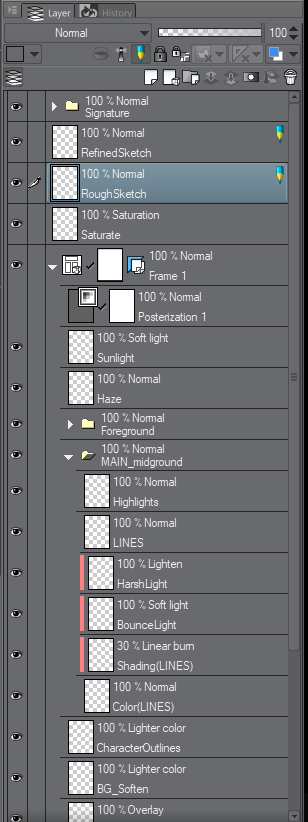For comics artists, especially webcomic creators, speedy drawing leads to freq. updates which lead to more story and excited readers! Here's how to draw fast, which I say is > drawing well (Let me explain)
#comics #webcomics #arttips
(2nd) If it's purpose is something else (framing dialogue, conveying emotion, establishing a scene, showing an action, etc.) then cut some corners!!
(3rd possibility next)
Very few of your panels will fall under the first category, so keep that in mind & save yourself some time!
Now let's get to my SPEED TIPS...
Let me introduce you to a blazing fast technique for weeding out errors...
Most artists have experienced the phenomenon of drawing something, thinking it's perfect, then coming back to it the next day or later and suddenly you can see some glaring problems that you couldn't see before! That's because...
What if, while working on a panel, instead of fiddling with the line art for 3+ hours, you could instead blink and suddenly gain fresh eyes?
TRY THIS:
Flip the canvas horizontally. If you don't already know this trick, IT WILL SAVE YOUR LIFE. Mirroring your art tricks your brain into seeing things from a fresh perspective!!
See for yourself and be the judge:
Details are often unimportant... observe:
If you put all your focus into the silhouette (which doesn't take long to draw, actually) and get sloppy with the interior details to save time, you're still probably making decent, passable art! The one exception to this is...
And now for some final tips that are centered around a digital workspace and how you can take advantage of it:
-Get yourself 10+ keyboard shortcuts!! Hitting a key is SO much quicker than glancing at & clicking an on-screen button, even if you can do that pretty fast anyway! (continued)
LEARN your 3-point perspective rules. LEARN color theory. LEARN how to draw a hand. And so on. Once you take the time to learn, you'll struggle a lot less and be faster.
PREPARE:
Now go, draw fast. 🏃♀️✨✨



















